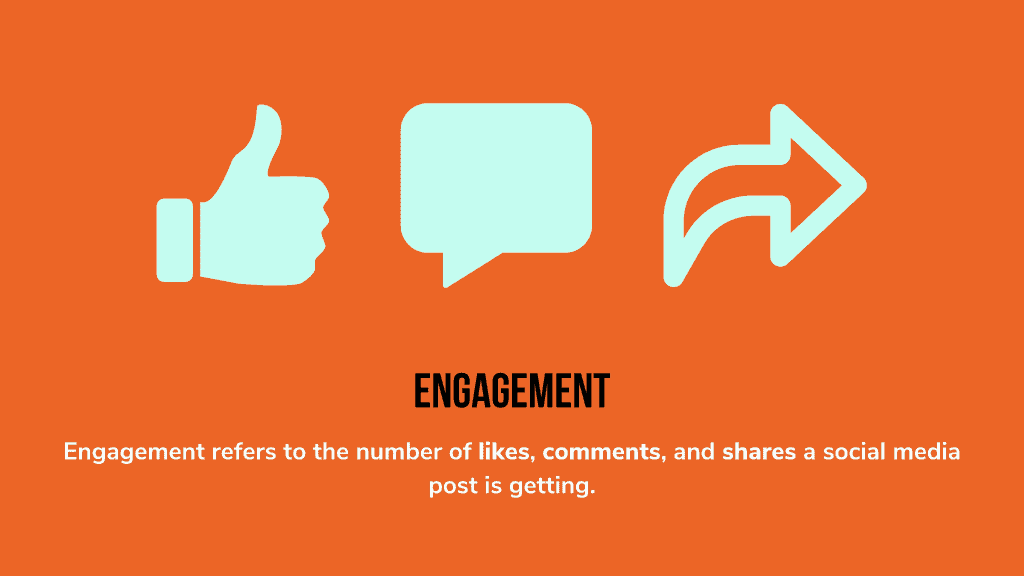10 SaaS Social Media Marketing Practices for Winning Businesses
Look, if you’re running a SaaS business, you already understand that social media is everywhere.
93% of marketers say the biggest benefit is getting your brand out there.
But are you actually using it the right way?
With so many companies out there, it’s easy to get lost in the noise.
The good news is that there are proven strategies for attracting and retaining the right customers online.
We will dive into what separates the SaaS companies killing it on social from the ones just spinning their wheels.
You’ll learn how to pick the perfect platforms for your SaaS, create attention-grabbing content, and see the actual numbers behind social media success.
Ready to get started?
Why Businesses Need Social Media Channels
Okay, let’s be real – social media is HUGE. Why should your SaaS business care?
Think about it: billions of people scrolling, liking, and sharing on a crazy number of different platforms.
It’s its own wild world, and each platform – from Facebook to TikTok – has a unique vibe.
In terms of the user population, here are the recent numbers per mainstream social media platform:
- Facebook = 2.934 billion users
- Instagram = 1.440 billion users
- TikTok = 1.39 billion users
- Twitter = 396.5 million users
- LinkedIn = 830 million users
Here’s the thing: all those eyeballs mean potential customers for your SaaS.
So, how do you tap into that?
By making your business a part of those social media conversations! Here’s why it’s worth it:
- Connect with the right people: A social media presence is like hanging out where your ideal customers are. You get to know them and build relationships.
- Show what you’ve got: Forget boring brochures. Use videos, explainers, and behind-the-scenes peeks to give potential customers a real feel for your software.
- Get discovered: People stumble upon awesome products on social media all the time – don’t you want yours to be one of them?
A fascinating report by Kleiner Perkins in 2018 unveiled that 78% of Facebook users had stumbled upon new products while browsing the app. (Source)

Convinced?
Good!
Now, the big question – how do you do it right?
Let’s cover the best ways to rock your SaaS social media marketing game.
10 Best Social Media Marketing Practices for Your SaaS Business
Social media is a big deal for marketing these days, and everyone wants a piece of action.
But honestly, there’s no magic formula that works for every business.
What does help is following innovative practices that set you up for better results.
So, here’s the deal:
Here are ten things you absolutely need to do to crush it with your SaaS social media marketing:
1. Discover the social channels frequented by your target audience.
62% of people all around the globe are on social media. (Source) That’s definitely something important to remember.
You know this already, but it’s super important for your SaaS business: You won’t get far with social media marketing if you don’t know where your potential customers chill online.
Are they Facebook fans?
Twitter addicts?
All about LinkedIn?
The thing is, finding this out can be tricky.
That’s why it’s worth doing some digging instead of just randomly throwing stuff out there and hoping it sticks.
Luckily, there are tons of helpful social media tools to help you pinpoint those hot spots.
Think about your SaaS.
If you’re in the B2B, LinkedIn, Twitter, and maybe even Facebook are probably good bets.
But, if you want to reach influencers, Instagram and TikTok are likely where the party’s at.
- Conduct market research: Surveys, focus groups, and analytics can help identify which social media channels your target audience uses.
- Analyze your competitors’ social media presence: Look at which platforms your competitors are using and analyze their engagement and following.
- Use social media listening tools: Monitor social media conversations and identify which platforms your target audience is most active on.
- Test and measure: Test different social media channels and measure the engagement and reach of your content to determine which are most effective.
2. Don’t use every popular social media platform; don’t get swayed by the shiny new thing!
Forget about being everywhere! It’s a trap.
I know it’s tempting to jump on every shiny new social media platform – we all get that urge!
But here’s the thing: You don’t need to be on every single one, especially in the world of SaaS.
Content builds relationships. Relationships are built on trust. Trust drives revenue.
Andrew Davis
Think of it like this: Would you rather be really, really good at a couple of things or just okay at a whole bunch?
That’s exactly what happens with social media marketing.
The real secret is finding the platforms where your ideal customers spend their time. Then focus like a laser beam on those!
Trying to be everywhere at once will just leave you feeling scattered and probably less effective in the long run.
Trying to be active on all social media platforms can leave you with “Half-Built Bridges.” This means starting on many platforms but not fully committing to any of them, leading to weak results.
Instead, pick one or two key platforms where your audience hangs out most.
Focus on building strong, complete strategies there before considering other platforms. This way, you can create real connections and see better engagement.
Okay, let’s get real.
If you’re a content creator selling courses and services to influencers and businesses, you should be crushing it on YouTube, TikTok, and Instagram.
These are your powerhouses.
Think about it: TikTok is THE place for short, punchy videos that hook people in.
You can jump on trends, show what you offer, and boost your brand awareness.
Honestly, Facebook and LinkedIn might not be worth your time right now.
They’re not where your ideal clients hang out as much.
Key takeaway: Don’t just follow the crowd to the newest social media platform. Do your homework first!
Figure out where your target audience actually spends their time online and focus your marketing efforts there.
3. Don’t sell right away!
Okay, take a deep breath.
Don’t jump straight into selling on social media.
I get it – you want sales.
But blasting people with “Buy my product!” messages is a surefire way to turn them off, especially in the world of SaaS.
Here’s what studies say: 72% of consumers don’t like sales talk. (Source)
Think of social media as a party.
You wouldn’t walk in and immediately start shoving product brochures at people, right?
Focus on building relationships first.
Chat with potential customers, get to know them, and and see what interests them.
Show them you’re invested in understanding them.
Engaging with your audience can give you a lot of inside information about what makes them tick, which can help your SaaS business improve even further.
So, how do you actually help potential customers without coming across as a pushy salesperson?
- Providing informative content
- Hosting webinars or workshops
- Offering free samples or trials
- Giving away free resources
- Providing excellent customer service
- Creating online communities
- Offering personalized recommendations or advice
- Sharing user-generated content
4. Always create opportunities for dialogue
You know what makes social media awesome?
The conversations!
That’s why getting people to interact with your SaaS brand is one of the smartest things you can do.
Here’s a tip: Don’t just post stuff.
Try giving your audience a reason to talk back.
When people feel like they’re part of the conversation, they get way more into your content.
Think about videos.
If you make a video about a hot topic in the SaaS world – something people are already buzzing about on Twitter or LinkedIn – you’re way more likely to get comments and shares.
Everyone’s going to have an opinion about that hot topic, so get ready to respond to those comments.
Be respectful, and answer questions. That’s how you build relationships and get people coming back for more.
To stay on track with the latest social media trends, monitor the top trends on Twitter.
You can also make use of hashtags. Most social media platforms display the number of conversations that revolve around a topic or word through hashtags.
You can also look up the most recent news regarding pop culture, politics, business, etc..
Through this social strategy. You’ll get a gist of what people are talking about online and what you can use as the focus of your next content.
5. Focus on your KPIs
Okay, if you’re into SaaS marketing, you need to get obsessed with your KPIs.
We’re talking key performance indicators – those little numbers that tell you if your social media efforts are actually working.
Honestly, tracking these numbers regularly is non-negotiable.
It’s how you see if your campaigns are bringing in those leads and sales or if they’re falling flat. It’s also how you make your strategy smarter over time.
Don’t worry; we’ll talk about the specific numbers you should watch in a bit.
The best part?
KPIs help you figure out which social media platforms are worth your time and which ones you might want to ditch.
Talk about focusing your energy!
Here’s a sneak peek of some critical social media KPIs you need to have on your radar:
- Reach: How many people are you reaching with your social media campaigns?
- Engagement: How engaged are your followers? What kind of engagement are you getting?
- Traffic: Are people visiting your website or blog from your social media posts?
- Leads: How many leads are you getting as a result of your social media campaigns?
- Sales: Are you making sales as a direct result of your social media campaigns?
A dedicated social media team is a huge advantage for your SaaS marketing.
They can keep a close eye on all your conversations and respond quickly – that makes a big difference to your customers!
6. Align your social media marketing to your overall marketing goals
Okay, let’s be real.
Social media marketing isn’t a nice to have. It’s a NEED-to-have for your SaaS business.
Marketing is not the art of finding clever ways to dispose of what you make. It is the art of creating genuine customer value.
Philip Kotler
It’s where you find a HUGE chunk of your audience and build genuine relationships with them.
Here’s the thing: your social media shouldn’t feel like an island, completely separate from the rest of your marketing.
Here’s how to make it work together:
- Matchy-matchy: All that awesome content you’re creating – blogs, videos, you name it? Use snippets of it on social media to get people excited and click through to the full deal.
- Customer love: Social is where the conversations happen. Respond to comments, answer questions… basically, treat your followers like real people (because they are!). This turns them from casual browsers into true fans of your brand.
- Sneaky promos: Got a big webinar or a killer new feature launch? Don’t be shy about using your social channels to spread the word and get people interested.
See? Social media marketing for SaaS doesn’t have to be complicated.
Focus on those connections, and make everything you do feel like part of a bigger picture.
7. Listen to your target market
Think of social listening as your superpower for crafting an excellent social media strategy.
It’s like having a direct line to what people are saying about your SaaS, about the industry, and what they wish they had.
Here’s why you should care:
- Know what people really think: Are they loving your product? Is there a feature everyone’s asking for? Social listening gives you the inside scoop that surveys can’t.
- Find those hidden leads: People talk about their problems online all the time. Imagine being able to jump in and say, “Hey, we have a solution for that!”
- Make your content better: What topics are hot in your industry? What questions keep popping up? Social listening practically gives you a content roadmap.
Okay, so how do you actually do it? Here are a few ideas:
- Setting up alerts for your business name, product name, and brand name. This will help you to track any mentions of your company online.
- Monitoring social media pages for keywords related to your business. This will help you to find conversations about your business that you may not have otherwise known about.
- Using social media tools to help you track relevant hashtags. These tools can automate the process of social listening for you and provide you with detailed reports on what people say about the topic related to your brand.
- Creating surveys to gather customer feedback about their experiences with your company or products. This can help you get feedback directly from customers and learn more about how they feel about your products and services.
- Participating in online forums and discussions where people are talking about your industry or products. This can help you understand what people say about your products and how they feel about them.
8. When creating content, make sure it can influence your audience
Forget about the hard sell – instead, focus on being helpful and interesting.
Think about what your ideal customers really need.
What problems do they have, and how can you offer tips or insights?
This is how you influence them on social media.
People trust people. Your goal is to become a trusted voice in your industry.
That means consistently producing valuable content—whether that’s Facebook posts, blogs, Instagram carousels, or even something fun like TikTok videos.
A social media calendar will help you stay organized!
Give people something good, and they’ll remember who you are.
The next time they need a solution like yours, who do you think they’ll turn to?
Plus, helpful content is way more likely to get shared, expanding your reach naturally.
- Know your target audience: Creating influential content requires knowing who you’re trying to influence. Research your target audience’s interests, values, and pain points to create content that resonates with them.
- Provide unique insights: Offer fresh perspectives or insights your audience hasn’t seen before. This can help establish you as an authority in your industry and differentiate you from competitors.
- Use emotional storytelling: Emotional storytelling can help connect with your audience and make your content more memorable. Use personal stories or experiences to help illustrate your message.
- Create visually appealing content: Use high-quality images, videos, and infographics to make your content more engaging and shareable. Visuals can help your message stand out in a crowded online space.
- Leverage social proof: Social proof can help establish credibility and influence others to engage with your content. Use testimonials, case studies, or statistics to back up your claims and demonstrate the value of your content.
9. You shouldn’t connect only with your audience (connect with other brands too!)
Lots of businesses make the mistake of just talking to their audience on social media.
Yeah, connecting with your customers is super important, but don’t forget the power of building relationships with other businesses!
Think about it – partner up with them to share content, and boom, you will naturally reach a whole new crowd and get your brand out there even more.
Plus, you’ll learn a ton from their experience to make your own social media campaigns even stronger.
It’s a win-win!
10. Optimize your brand for selling
Okay, you know social media is vital for your SaaS business, but how do you actually get people to buy stuff?
That’s where optimizing your brand for sales comes in, especially because 81% of people research a business or product via the Internet before making a purchase decision. (Source)
Here are some of the best ways to do just that:
- Include the right keywords in your social media profiles and posts. This will help you reach a larger audience interested in buying your products or services.
- Targeting the right audience on social media. By targeting the right audience, businesses can reach potential customers likely to be interested in what they offer.
- Creating content that is relevant and appealing to potential customers. This content can help businesses sell their products or services to their target market.
You know KPIs are important, but with so much data available, how do you make sense of it all?
That’s especially true in the crazy world of social media marketing, especially for SaaS companies.
Let’s break down some of the must-track numbers to help you get ahead of the competition:
The Common KPIs in a Social Media Strategy
If you’re running social media campaigns for your SaaS company, it’s not enough to just follow vague ‘best practices’.
You need to actually measure the results.
That means getting laser-focused on specific numbers (KPIs) that show you exactly how your social media is performing.
This is the only way to know if your strategy is working or if you need to try something different.
Engagement

Let’s be real—engagement is the foundation of successful SaaS social media marketing.
It’s how you connect with your audience and start valuable conversations.
Here’s the thing: you can’t improve what you don’t measure. That’s why tracking engagement is so important.
It’s like the applause after a great presentation – it lets you know what worked and what your audience wants more of.
Think of it this way – good engagement means your posts are getting shared.
That’s free advertising right there!
But how do you actually track this stuff?
Simple: check those likes, comments, and shares. People don’t just engage with boring content.
If they’re reacting, commenting, and spreading your posts around, you know you’ve got something special.
Engaging content is what draws people in. It’s what gets those conversations going!
Impressions

One super important number to keep an eye on is your impressions.
Why?
Because impressions tell you how many times your posts appeared in people’s feeds.
This gives you an idea of how far your content is spreading.
Now, don’t mix up impressions with reach.
Reach is the number of unique people who saw your stuff, while impressions count every single time someone sees it.
So, your impressions will always be higher than your reach. (More on reach later!)
The kicker with impressions is, just because someone saw your post pop up, it doesn’t mean they read it or clicked on it.
They might’ve scrolled right past. Still, each time it appears, that counts as an impression.
Bottom line: Impressions show you how often your content is getting out there in the social media world.
Reach

Reach isn’t the same as impressions.
Impressions are like your content popping up on the screen, even if someone keeps scrolling.
Reach is when they engage with it for the first time.
Why is reach so important?
Well, if you’re a SaaS company, not everyone knows you exist yet.
You need to get in front of potential customers. That’s where reach comes in.
Your main goal with social media content should be to get it seen by as many of the right people as possible.
Use those hashtags, share them with your followers, and create stuff that makes people stop and notice.
So, how do you actually track your reach?
Each platform is a little different.
On Facebook, for example, reach is counted the first time a user sees your post. If they see it later, that’s an impression, not more reach.
Key takeaway: Reach happens once per person; impressions can be unlimited.
In Summary
Okay, here’s the deal with SaaS social media marketing: you gotta be consistent, flexible, and really know who you’re talking to.
These ten tips are fantastic starting points, but don’t be afraid to experiment.
The best SaaS companies aren’t just following the rules – they’re setting new trends.
The goal is to make genuine connections, get people excited about your brand, and stand out from the crowd.
Social media is all about the human factor, right? Your idea might be the next big thing!
Find what works for you while still keeping those smart practices in mind.








